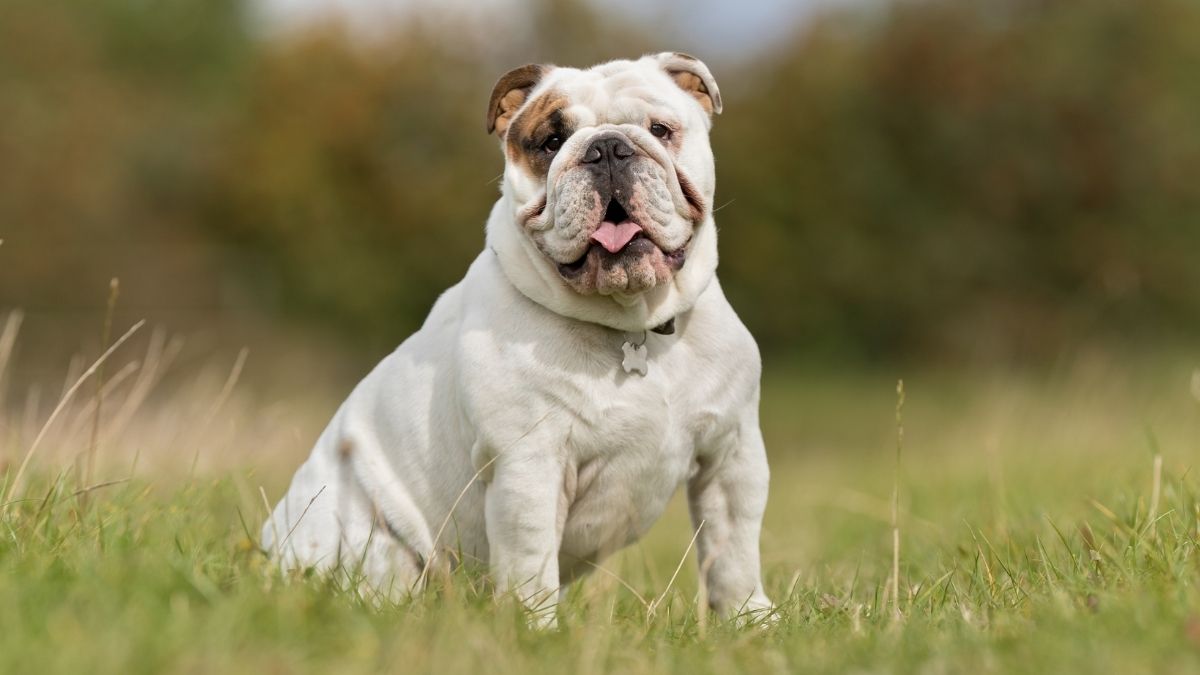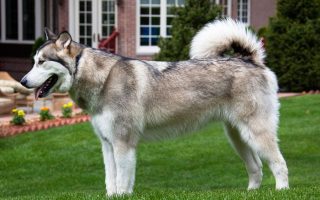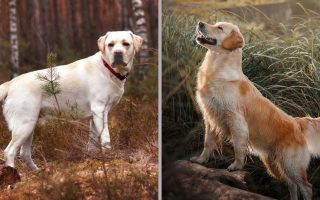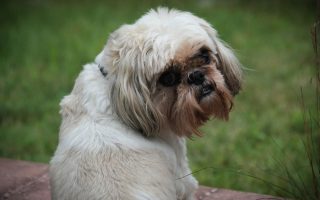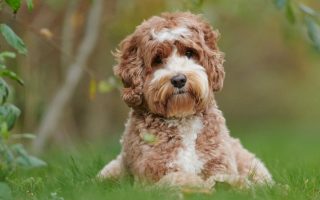The Victorian Bulldog is not a breed you hear about every day, and those who have met one might confuse it for its cousin, the English Bulldog.
It is the result of crossbreeding involving many Bulldogs, and it has its set of good characteristics.
At first glance, Victorian Bulldogs look like dogs you’d only bring home to scare people. They look intimidating and bulky. However, there’s more to this breed than its looks.
If you’re considering bringing one to your house as a pet, it could be the right choice for you.
That said, you should know its needs, drawbacks, and strengths. This guide will provide an arsenal of information for your benefit.
What is a Victorian Bulldog?
The Victorian Bulldog is a variety of the English Bulldog, and it was developed by crossing the Staffordshire Bull Terrier, the Bullmastiff, the Bull Terrier, and the English Bulldog.
It is a recent and rare dog breed, having been bred a few centuries back.
It isn’t considered a designer breed because of the various breeds mated to develop it.
Still, it hasn’t been recognized by the American Kennel Club or any major Kennel Club, probably because of its rarity.
The only organizations that have recognized the Victorian Bulldog are the American Canine Association and the Dog Registry of America.
Despite its intimidating looks, the Victorian Bulldog plays the role of a companion to the families that own it. It is friendly but can be a good guard dog.
The Victorian Bulldog is similar to the English Bulldog in looks and behavior but has its unique features.
Victorian Bulldog Dog Breed Information
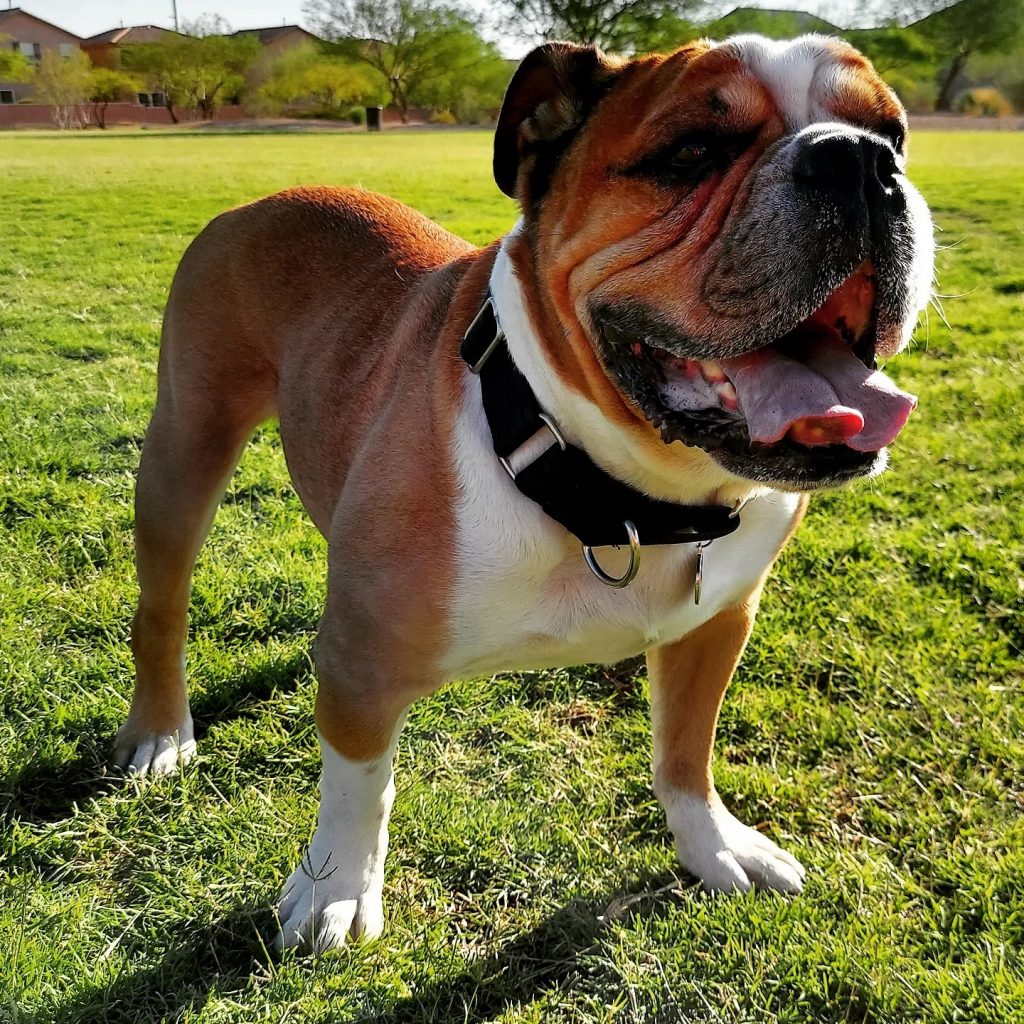
| Height | 16 to 19 inches |
| Weight | 55 to 75 pounds |
| Life Expectancy | 12 to 14 years |
| Coat Type | Short, straight |
| Coat Colors | Brindle, fawn, red, white |
| Temperament | Calm, loyal, playful |
| Ideal For | Families, Single Owners |
| Hypoallergenic | No |
| Breed Recognition | American Canine Association, Dog Registry of America |
| Puppy Price | $1,300—$2,000 |
Victorian Bulldog Puppy Characteristics
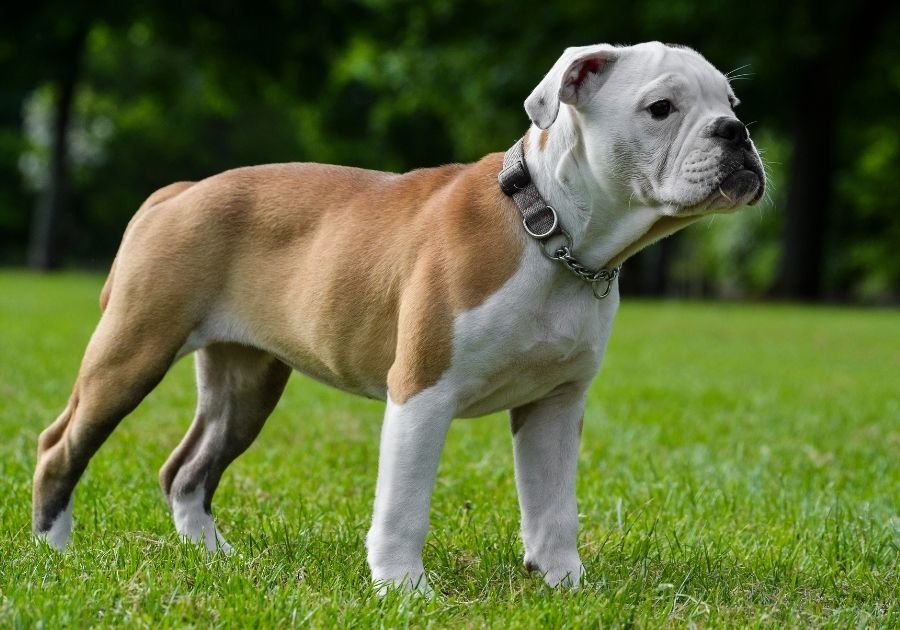
| Health | Medium |
| Grooming Need | Low |
| Friendliness | High |
| Energy | Low |
| Trainability | High |
Victorian Bulldog History
The person credited for the development of the Victorian Bulldog is Ken Mollett, and this happened in the 1980s. The history of this breed is tied to the challenges faced by the English Bulldog.
The English Bulldog started as a bullbaiting fighter before it transitioned to a household pet after many years. It rose to popularity, which became a disadvantage as much as an advantage for it.
The increase in demand brought about careless breeding as many breeders began to emphasize some features without considering the breed’s health.
As such, the wrinkles and stocky body of the English Bulldog brought health issues. Breathing problems, skin infections, and skeletal issues are some of the setbacks the English Bulldog faces.
Ken Mollett decided to create a healthier Bulldog following the standards of old Bulldogs in the 1800s.
He brought together many breeds to form the Victorian Bulldog. This happened during the resurrection breeding movement when modern dogs were bred together to bring back extinct breeds.
The Victorian Bulldog is considered a “reincarnation” of the Old English Bulldog, now extinct.
Victorian Bulldog Size & Appearance
The breed standard of the Victorian Bulldog was established by Ken Mollett, which is what breeders follow. Thus, you will find conformity in the looks and size of this breed.
With a height that gets to 19 inches and a weight of 55 to 75 pounds, the Victorian Bulldog is a medium to large dog. Males are often bigger than females, as is the case with many dog breeds.
The breed’s coat is short and straight, with colors like fawn, red and white adorning it. Black is not a standard Victorian Bulldog color, nor should there be black with any other color.
The Victorian Bulldog is muscular and stocky, with a wide nostril and hanging skin. The chest is broad, and the shoulders have strong attributes that give it a courageous look.
The Victorian Bulldog is usually bigger than the English Bulldog and is very athletic.
Victorian Bulldog Temperament
The Old English Bulldog was used for bullbaiting and had an aggressive personality for it, but breeders have bred away from the aggression in modern Bulldogs.
Ken Mollett mated these modern Bulldogs to develop the Victorian Bulldog, so we can expect the latter to have a cool personality.
This breed is lively, fun, and friendly, a combination that’s needed of any household pet. It can either be sedentary indoors or playing outdoors.
That fits with what many pet parents want, a balance between high energy and idleness.
The Victorian Bulldog is also intelligent and loves being with its owner. It remains loyal to its family and is protective, traits that make it a good guard dog.
Overall, this breed has a balanced, agreeable temperament and is known to be less fierce than other Bulldogs. It comes as a gentle and affectionate dog.
Is the Victorian Bulldog a Good Family Dog?
The Victorian Bulldog is a good fit for many homes. It is affectionate and doesn’t need a lot of exercise, only love. This breed loves kids and is a good playmate for older children.
It is often advisable for families with older kids, but it can adapt to being with toddlers because of its gentle nature.
You’d need to supervise all interactions your dog has with your kids, but generally, this breed is kid-friendly.
It also gets along with pets, especially when well socialized. The aggression towards animals that are often found in Bulldogs is virtually non-existent in the Victorian Bulldog, so you can hope for a peaceful environment.
This breed is usually wary of strangers, so part of the training would be to teach it a command or a sign for it to be at ease when you have a visitor.
You’d also have to deal with slobber around the house, but with the many qualities of this breed, that’s a small price to pay.
Victorian Bulldog Puppy
When getting a Victorian Bulldog puppy, be mindful of its status.
Some breeders can pass off a Bulldog mix as a Victorian Bulldog, and when it is still a puppy, you might not know the difference. Make inquiries on the parents to be sure they are both Victorian Bulldogs.
A Victorian Bulldog pup is ready to become a part of a new family at two months, and by then, it should be around 10 pounds.
From then, it will keep growing till it gets to a year or 2. During those years, it should have gotten to full adult size.
Here’s a sample of the puppy growth:
| Age | Weight (in pounds) |
| 2 months | 10 |
| 3 months | 15 to 20 |
| 6 months | 30 to 40 |
| 9 months | 40 to 50 |
| 12 months | 50 and above |
Victorian Bulldog Price: How much is a Victorian Bulldog?
This dog breed is new and rare, yet demands for it keep increasing. Consequently, it is hard to shop or adopt a Victorian Bulldog.
Though not as expensive as the English Bulldog (which falls between $1,500 and $4,000), this breed will cost you a good amount of money.
The Victorian Bulldog price ranges between $1,300 and $3,000 from a reputable breeder. If you’re getting one from a quality pedigree, the price can get to $5,000.
Because this breed is rare, finding Victorian Bulldog breeders can be challenging, and you might need to wait for some time before you see an available puppy. It gets even harder if you wish to adopt this breed.
When you do find a breeder, be sure he/she is a reputable one who isn’t trying to play a fast one on you by selling a Bulldog mix as a Victorian Bulldog.
The pup should also be well-bred, free from health issues, and kept in a good environment. These and more should be your priority when getting a breed.
How to Care for a Victorian Bulldog
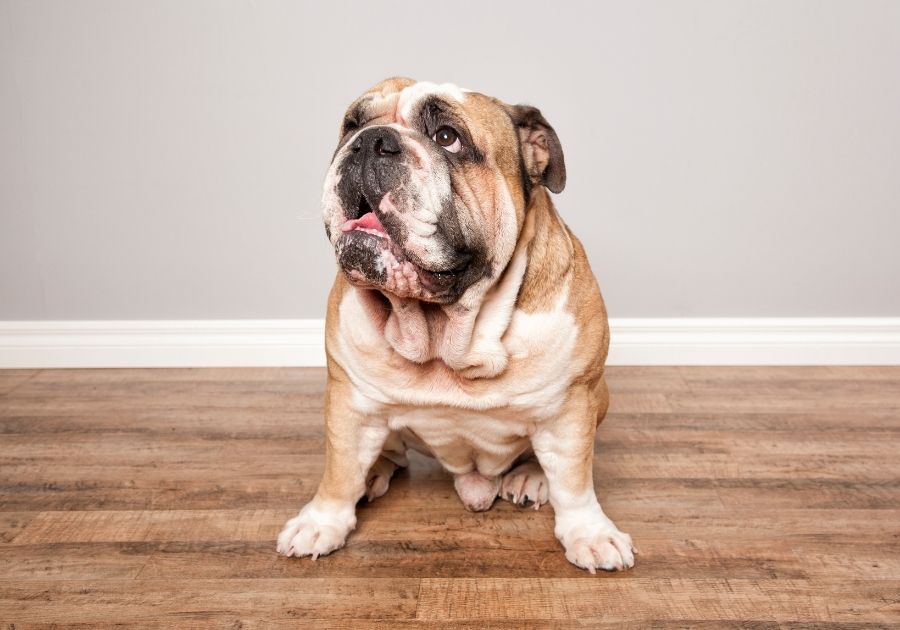
Once you’re sure you want this breed and you’ve got the means to afford one, what you need next are some ideas on what it means to take care of it.
We recommend meeting a veterinarian for more specific instructions, but we’ll guide you with some facts that can help.
Feeding
Victorian Bulldogs are not picky eaters, so feeding them is not challenging. All they need is a high-quality diet, and it doesn’t matter whether it is raw, wet, or dry.
The recommended amount of calories for this breed each day is 1,000 calories, but that can vary depending on size.
Obesity is a common problem with this breed because of its large appetite, so you should control its meal. Do not let it free feed, or it risks getting overweight.
Rather, you can opt for ¾ to 1 cup of meal twice a day. Try to feed your dog during the same period each day so it’ll get used to it.
There are many food products out there good for Bulldogs in general, and amongst them, we recommend:
- Best for Puppies: Royal Canin Bulldog Puppy Dry Dog Food
- Best for Adults: Royal Canin Bulldog Adult Dry Dog Food
Exercise
Although this breed is playful, it doesn’t have a high amount of energy. Exercise is geared towards keeping it healthy and maintaining its weight.
Left alone, the Victorian Bulldog can become a couch potato. It can be satisfied with a 20 to 30 minutes walk per day, after which you might find it dozing off close to your couch.
Its low energy is what makes it adaptable to apartment living, and if you don’t fancy intensive exercise, this could be a good choice for you.
Hiking is not a good choice for this breed, but there are some other activities it can enjoy, like frisbee toss and swimming (with a life jacket for safety).
Training
The Victorian Bulldog is loyal and easy to train. Good for both new and experienced pet parents, this breed loves to please and has enough intelligence to learn quickly.
Obedience training is easy for it, and it should be mentally stimulated to curb boredom. It also needs socialization.
The only time you’d face challenges is if you try to be aggressive towards them while training.
Harsh treatment or too much dominance from you will make the Victorian Bulldog get hard-headed and daring.
The best way to train this breed is through positive reinforcements. Praises and motivation work wonders. You can also use dog treats but watch the calories.
Grooming
Grooming a Victorian Bulldog is easy because of its short coat. Though it sheds, the dead hair isn’t as massive as that of double-coated breeds.
Taking care of its coat requires minimal effort, and twice a week coat brushing is enough.
Bathing with a good shampoo should be done once a month, the exceptions being when the dog gets dirty.
This breed doesn’t need hair trimming as it isn’t a long-haired breed. The simple brushing will do just fine. You can use our recommended brushes for short hair dogs for a better effect.
The wrinkles on its face need to be clean. Fortunately, they aren’t as much as other Bulldogs, but if you leave it unclean, it can be a good environment for an infection to grow.
The ears can also accumulate dirt and wax, leading to an infection. You should properly clean them too. Also, take care of the teeth and face.
Victorian Bulldog Lifespan and Health Issues
The Victorian Bulldog life expectancy is long, averaging between 12 and 14 years.
It also tends to be healthier than the English Bulldog, just as Mollett wanted. However, it has its share of medical complications.
- Hip and Elbow Dysplasia: These are the main Victorian Bulldog health issues, and because they are hereditary, they can be prevented. Both illnesses are joint-related, and they can lead to arthritis or lameness. Symptoms include limping and a reluctance to move or exercise.
- Skin Allergy: This is often a result of the wrinkles on the skin. It doesn’t suffer from this as much as the English Bulldog, but it is not impervious to it either.
- Obesity: This can be resolved by a good feeding plan for your dog
- Sensitivity to Weather Changes: If you live in an environment with extreme weather conditions, it will be an issue.
Is the Victorian Bulldog Right for me?
This dog breed is fit for many pet parents, and that can be you if you’re certain it fits your idea of a household pet.
To be sure about this, you should know what advantages the breed will bring to your home and the disadvantages as well.
Pros
- Friendly and affectionate.
- Suitable for an apartment and smaller houses.
- Good first-time dogs.
Cons
- Rare dog breed and hard to find.
- Drools a lot, an attribute many pet parents don’t appreciate.
- Active people might prefer a more energetic dog.
- Not hypoallergenic, making it a poor choice for allergic people.
Where to Find Victorian Bulldog Puppies for Sale or Adoption
To make the work easy for you, here are some avenues from which you can find a Victorian Bulldog either for sale or adoption.
Because there aren’t many rescue shelters with this breed, we will suggest those that rescue Bulldogs in general.
If you’re looking to shop for this breed, websites like Greenfield Puppies, Canine Corral, and Furrylicious are good places to start your search.
However, if you’re considering adoption, you may be lucky to find this breed at rescues like Poetical Kennel, Charlotte Dog Club, and Bulldog Rescue Network.
Frequently Asked Questions (FAQs)
What breeds make a Victorian Bulldog?
The Victorian Bulldog was developed by mating many Bulldog breeds like the English Bulldog, the Staffordshire Bull Terrier, the Bull Terriers, and the Bullmastiff.
What do I need to know about Victorian Bulldogs?
The Victorian Bulldog was developed by a breeder named Ken Mollett and is a medium to large-sized breed.
It is both a companion and a guard dog and can be a good family dog. They are low energy breeds and can adapt to any environment.
Although a purebred dog, it is not yet recognized by the American Kennel Club or any other major Kennel Clubs.
What’s the difference between Victorian bulldog and English bulldog?
The English Bulldog and the Victorian Bulldog are related, and they are very similar.
However, they are not the same; the latter is bigger than the English Bulldog, and it looks stockier. It also tends to be healthier.
Wrap Up
There are a lot of opportunities for the Victorian Bulldog to become popular, and with the increasing demand, we might be seeing more of it as the years go by.
An excellent family companion and household guardian, they are one of the coolest dog breeds to have.
Featured Image: Bigandt_Photography / Getty Images

